Graphic Design History a Critical Guide Summary
Graphic design history: 25 landmark design events
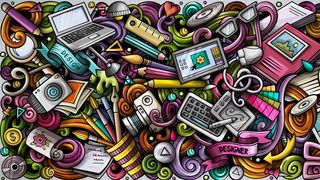
The past 25 years have been rich in terms of graphic design history. We've seen monumental changes, and our sister magazine Computer Arts has been there to bring you the lowdown on everything that's happened in graphic design and illustration. The magazine hit the newsstands in 1995, meaning a quarter of a century has passed, so it seems like the perfect time to take a look at how exactly the industry has evolved in that time.
In this article, we look back at some of the biggest moments, milestones, trends and developments over the last 25 years, and to provide a broad perspective, we've asked the opinion of some well-known industry names.
For further exploration of what's happening in graphic design, see our post on the hottest graphic design trends, and put them to use with our pick of the best tools for graphic designers.
What has changed since 1995?
"So much has changed since 1995!" says Neville Brody, one of the 20th century's most famous graphic designers. "While the main changes have been technological – fast and large data transmission, video conferencing, actual-time responses, mass storage, processing capabilities and portable computing power – the more invisible changes have come through cultural responses, leading to greater empowerment. We have a major self- publishing world now, on every level, and distribution models that allow greater scaling and fundraising."
In his eyes, though, it's not all been positive. "Brands have increasingly become homogenous storytellers, competing usually for the same demographic and market using the same tools, mechanisms and content," he says. "Media has at the same time become relatively utilitarian and homogenised. Ultimately, creative choices have been reduced to simple patterns and restrictive palettes." (We explore this further in our post has branding become boring?)
For these reasons, Brody believes that, "after 25 years, what's really needed now is some new break-out thinking and creativity – real risk- taking and rule-challenging".
01. Computer Arts launches
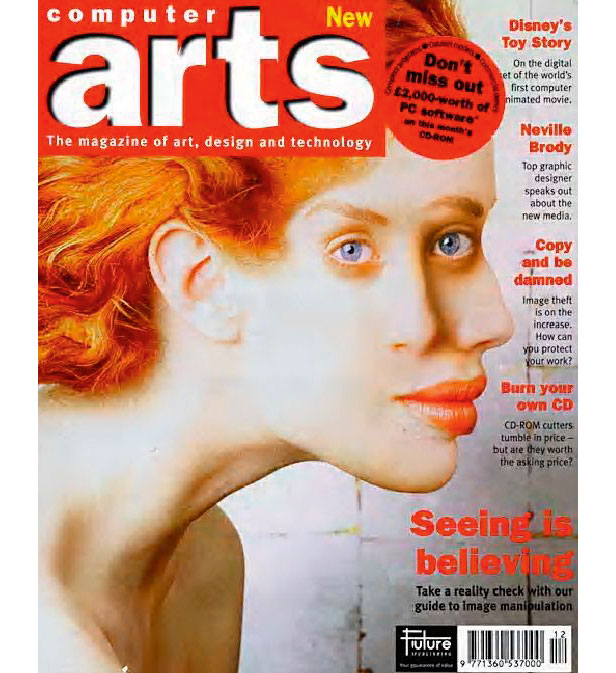
The fashion world had Vogue. Advertising had Campaign. Then in 1995, graphic designers and illustrators got their own, must-read 'Bible', as issue one of Computer Arts hit the shelves.
"I was a reader right from the start, as there was nothing else like it," recalls artist and designer Brendan Dawes. Those early issues now provide a snapshot of the time, packed with advice on how to use exotic new tools such as Photoshop and Illustrator. As artist Jon Burgerman puts it: "It was there for professionals and students alike, offering insight and cover discs... like a friendly tutor who's a bit too cool for college."
The print magazine is now more geared towards idea generation, conceptual thinking and design process. As Jamie Ellul, founder of Supple Studio, describes it, "Computer Arts today is a really good resource for reading in-depth project case studies, and hearing opinions from other designers and creatives."
Marie Claire, FHM, Loaded and NME have closed, but Computer Arts is still going strong, and as influential as ever. As creative director Kyle Wilkinson says: "The number of young designers that Computer Arts has helped develop through advice, tutorials and exposure must be countless."
02. The web
Although the internet had existed in some form since the early 1970s, virtually no-one outside of computer scientists and serious nerds had heard of it. But in the mid-1990s, a program called Netscape came to prominence, and started to turn web browsing from a bafflingly complex task into something that was relatively achievable.
"In terms of design moments, there's been nothing more impactful for me than the birth of Netscape," recalls Laura Jordan Bambach, creative director and former president of D&AD. "It turned playing on MOSAIC and working in Hyper Card and Director into something that had a potentially unlimited audience. A space to create art, and a community in cyberfeminism that's had a massive impact on my life. It also gave me my career – starting a business at university, designing and coding when it was still all done in Notepad."
Bambach was very much ahead of the game here: most graphic designers wouldn't be designing for the web for at least another decade. But Netscape, on which the modern browser Firefox is based, remains a key moment in an internet age that's changed pretty much everything.
03. UX Design
Today, user experience, aka UX, is one of the most in-demand services from graphic designers. But back in the mid-nineties, it was something early pioneers were only just inventing, usually in total isolation from each other.
Graphic designer and professor Louise Sandhaus offers a typical example. In the 90s, she was hired as an art director on a project for Taco Bell, which wanted to electronically run all of its store ordering through a single touch-screen system, to make life easier for employees. "But the methodologies didn't really exist," she recalls. "User experience and user interface design had yet to go mainstream. It was the Wild West."
User experience and user interface design had yet to go mainstream. It was the Wild West.
Louise Sandhaus
Initially, the visual design of the interface and the writing of the software were going to be conducted separately, but to Sandhaus, that seemed all wrong. "So I developed a methodology of sketched storyboards running through various tasks that allowed myself and the software engineers to develop the project together," she explains. It might sound obvious now, but at the time it was revolutionary.
Similar experiences by other pioneers eventually evolved into commonly accepted best UX practices (to test your own, see our guide to user testing), and today define everything from Android apps to video-streaming interfaces. Most of this work remains invisible to consumers, but we'd find our daily lives extremely time-consuming and frustrating without it.
04. IKEA
"In my 25 years as a professional designer," says Taxi founder Spencer Buck, "the thing that's struck me most is the revolution in people's aesthetic awareness and design sensibilities." The influence of Apple is an obvious and much-cited reason for this cultural shift. But Spencer points to another, often overlooked one: the rise of Swedish furniture retailer IKEA.
"In 1996 IKEA burst on to our TV screens with its iconic ad: Chuck out your Chintz," he recalls. "It essentially encouraged British housewives – their core demographic then – to throw away their fussy and frilly furnishings in place of cool, minimalist Scandi gathering momentum, it started to transform attitudes to design, by getting people to question why they were accepting of awful home decor, which was usually directly influenced by their parents' tastes."
And that, says Buck, was profound. "Up until that point in time, very few people had questioned, 'Why do I live like this?' They just blindly accepted a Laura Ashley way of life. The strategy of ad agency St Luke's was to help IKEA change British design taste for the better and boy, did it succeed."
05. The iMac
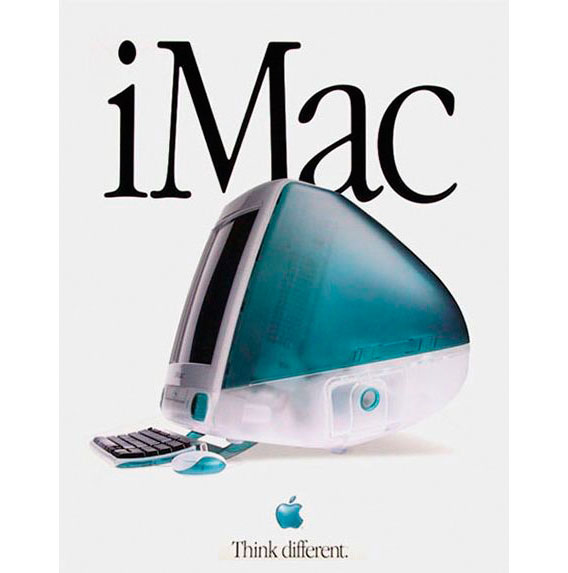
John Lloyd, co-founder of Lloyd Northover Limited, puts it simply: "One of the most significant technological events of the past 25 years must be the arrival in 1998 of the iMac. We were early adopters of the Macintosh when it appeared in 1984, but it's the iMac in its various iterations that's completely transformed the practical ways in which designers work."
Sawdust co-founder Rob Gonzalez was "overawed" when he first saw one as a design student. "To me it looked like something straight out of Stanley Kubrick's film, 2001: A Space Odyssey," he recalls. "The flat screen, shiny white case with over-the-top bevelled edges felt so futuristic: I was in love."
But it wasn't just about good looks, it was about what it could do. "Before the iMac, I painted with real paint on real canvas," says artist and illustrator Stanley Chow. "I wouldn't have remotely entertained the idea of using a computer for my art. But in 1999, my Dad bought me an iMac for my 25th birthday, and it literally changed my life.
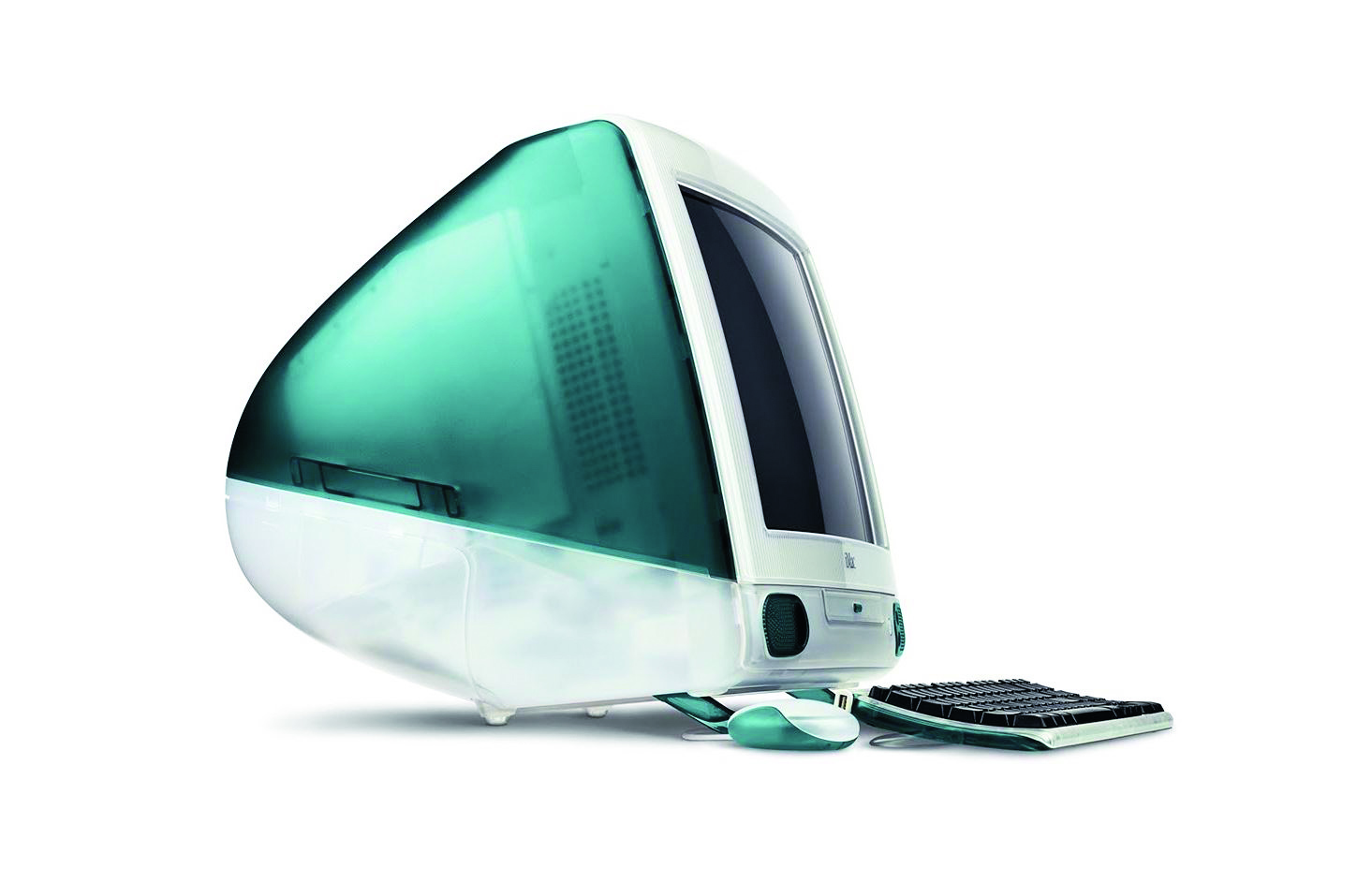
"Just being able to 'paint' a whole page with a touch of the button was a revelation," he explains. "It was a number of years of self-teaching before I got any good at it, but now I pretty much solely rely on Illustrator. If it wasn't for the iMac, I'd probably still be painting traditionally, and probably still be poor and starving."
More broadly, the rise of affordable Macs powerful enough to handle the entire design process has changed the game for the creative industry. As Ellul notes: "You could suddenly be a design agency by buying a laptop, a software licence, a printer, a scanner and a Pantone book. It opened the gateway to smaller agencies setting up and competing with the big boys. Because of this, I was able to set up my first agency [Magpie Studio] in 2008 with two friends and tiny overheads."
"From a technical perspective, the advent of low-cost, high-speed Macs has been pretty revolutionary," agrees Michael Johnson. "Consider this: I started Johnson Banks in 1992 and had to take out a substantial bank loan in order to buy three Apple Macs and a crude laser writer. I think they cost nearly 20 grand!"
The idea of actually creating your own typeface used to be out of reach for most designers. Then in 1998, FontLab 3 was released for Mac, and things started to change rapidly. Today, sophisticated font creation tools are easy to find and use, enabling designers to add a whole new string to their bow: the ability to create custom type for their clients.
"The increase of more accessible software that enables typographic ideation and creation has been one of the biggest things to influence my career," says Pentagram designer Paula Scher. "This has allowed designers to work with type in their day-to-day, which has been really exciting and helpful for me and my team."
Wilkinson agrees, and says his life would have been very different without it. "Although the work of Wilkinson Studio has never been about one specific discipline, the rise in typographic commissions and our experimental approach to type has led to us working with some of our dream clients, such as The New York Times, Adobe and TIME Inc.," Wilkinson says.
07. Visceral design
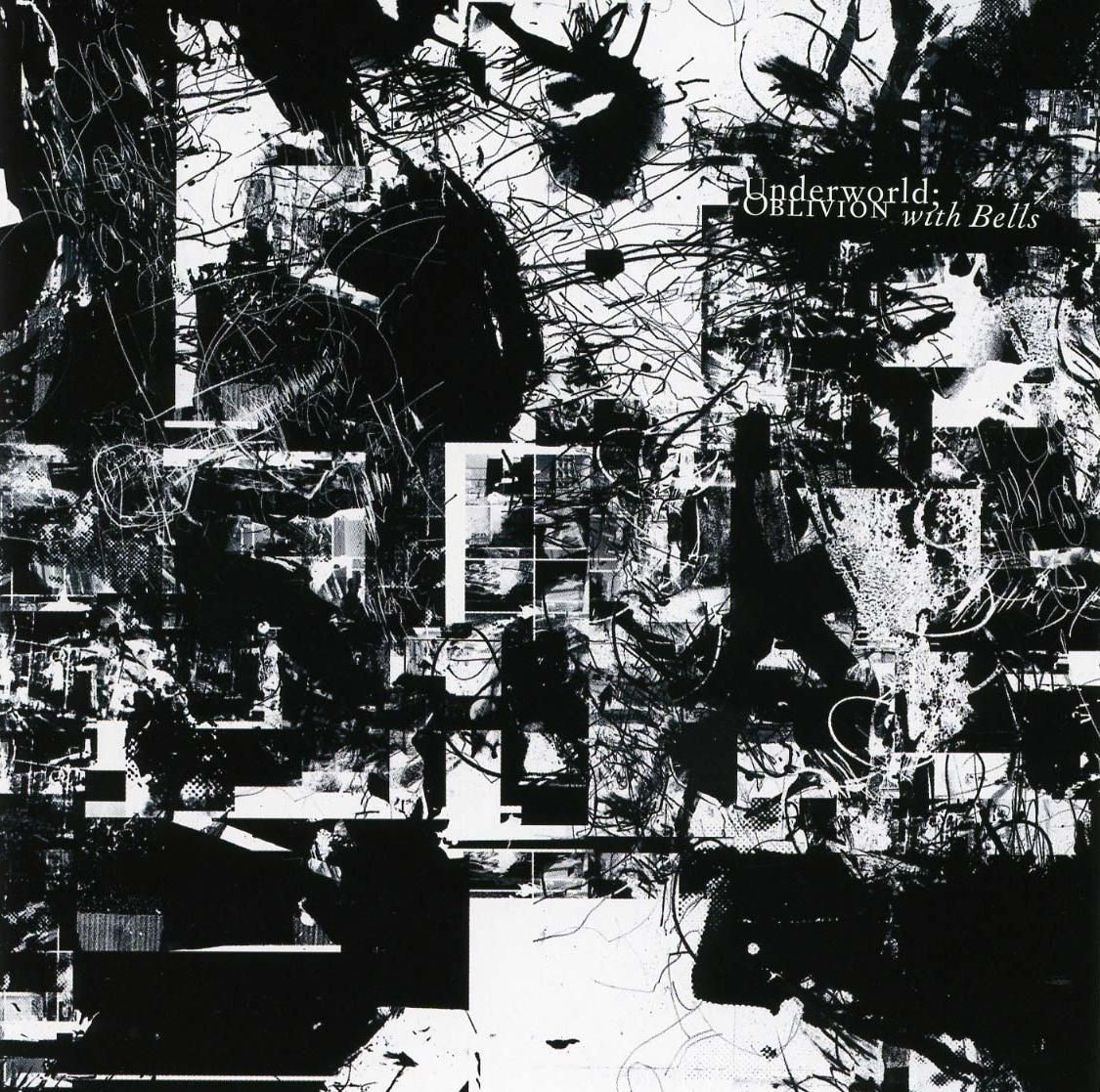
Many youngsters today would only associate the word 'grunge' with music or fashion. But the late 1990s saw its influence on the worlds of graphic design and illustration.
"As a design student at the turn of the century, I came up in a hugely exciting visual era that was, for me at least, dominated by the likes of Tomato, Vaughan Oliver, David Carson and Stefan Sagmeister," recalls Craig Ward. "They all had this very visceral, almost abusive relationship with typography and technology."
At the heart of it all, he notes, was the marriage of design and music. "Vaughan's aesthetic in particular was a perfect outfit for the grunge soundtrack of my teenage years while, in the decade of Trainspotting, Tomato's covers for Underworld married the incoherent, mumbled poetry of their music with a push-it-until-it-breaks approach to design and communication. I'd never seen anything like it."
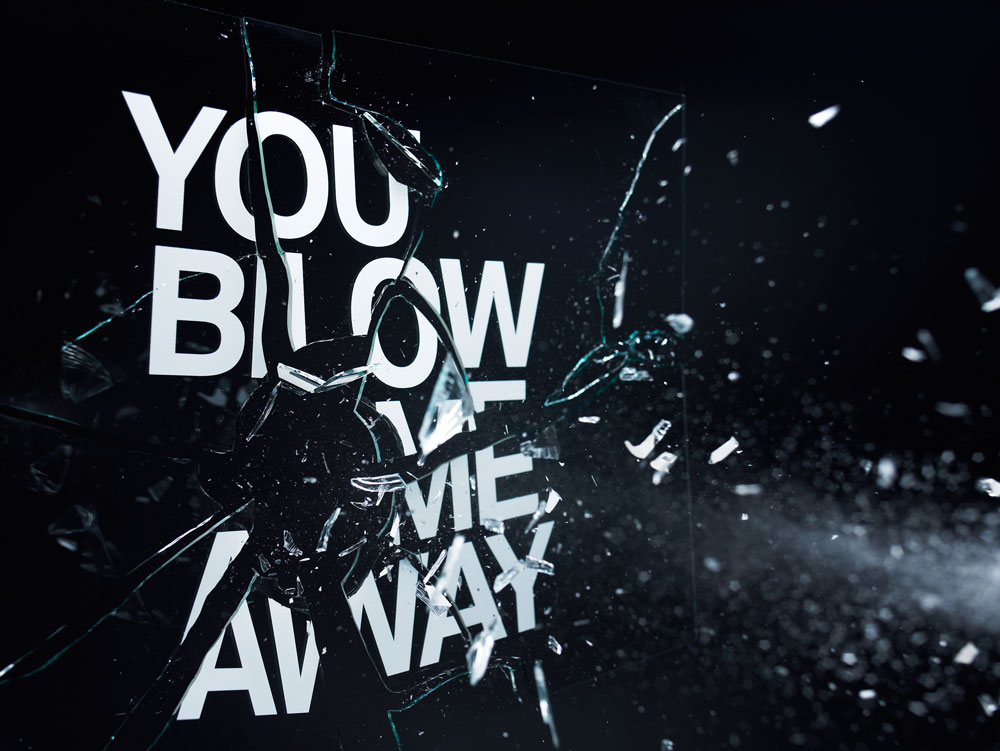
When Computer Arts first featured Ward's work on the cover, almost a decade later in June 2009, he was just hitting his stride in terms of his experimental work. "What I was doing was an extension of that 90s approach and, on occasion, pushing legibility and communication until it broke," he recalls. "So that whole period of late 90s design was hugely important for me."
08. Video conferencing
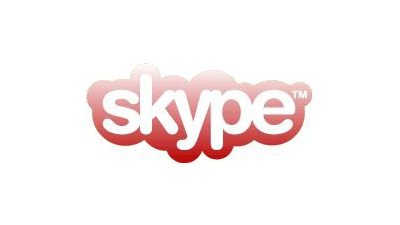
When you think of the tech that's influenced design, you naturally think of design tools. But other developments have been just as crucial.
Lindon Leader, the graphic designer best known for his iconic FedEx logo, offers an example. "The number one thing that's influenced my practice over the past 25 years has been the advent of superior video teleconferencing technology," he says.
"Video conferencing in the late 80s was archaic by comparison, what with chronic resolution, poor colour performance and syncing issues, and it was very expensive," he recalls. But since the launch of Skype in 2003, all that has changed. "Today, economical and sophisticated online services – even FaceTime on my phone – keeps me close to the client."
And that's important for environmental reasons, too, Leader stresses. "Today, I'll fly only when absolutely necessary," he explains. "That amounts to a good dozen or so four- to five-hour flights that don't get taken; by my office, at least. And clients today are cool with online presentations, especially as it saves them considerable money."
09. Tate Modern
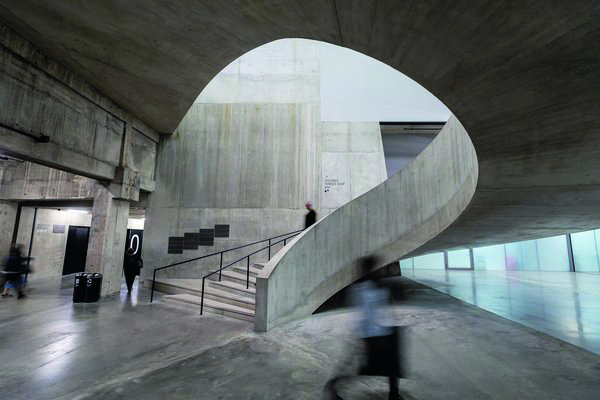
It's weird to think that before May 2000, there was no Tate Modern. Launched in an era when the Young British Artists (YBAs) such as Damien Hirst and Tracey Emin were breathing new life into contemporary art, the London gallery has been a huge hit. Last year, for example, it pulled in almost six million visitors, giving the lie to the idea that "nobody likes modern art".
"Tate Modern has become for me a much-loved and frequently visited fount of creative stimulation," says John Lloyd. "I've always sought, and encouraged my colleagues to seek creative inspiration away from the computer and the studio. If you're experiencing a creative block, I'd always recommend you pick up a brush or a pencil, go for a walk, look around, visit a gallery."
The building itself – a conversion from an old power station – is a stunning inspiration in itself. And that's typical of the past quarter- century, which has brought us countless architectural feats of wonder across the world, from New York's High Line project to Berlin's reconstructed Neues Museum.
Michael Wolff, co-founder of Wolff Olins, picks as his personal favourite: "The Biomuseo, Frank Gehry's astonishing natural history museum in Panama City, which opened in 2014. It highlights Panama's natural and cultural history, emphasising the role of humans in the 21st century."
10. Speak Up
While books and magazines delve into topics in depth, sometimes you just need a quick burst of more casual inspiration. Hence the rise of the design blog, which has become an integral part of the creative landscape over the past quarter-century.
The blog that broke the mould was Speak Up. "Launched by Armin Vit in 2002, within a year it was one of the most read sites on the internet," recalls Debbie Millman, artist, designer, educator and host of the podcast Design Matters. "I was written about in May 2003 and my career was excoriated. I ended up participating, and the path I took after that experience ultimately put me on the path to do everything I'm still doing today. This was a big influence on my career."
11. YouTube

Another technology that isn't a design tool, but has definitely impacted the profession, is YouTube, which was launched in 2005.
"I've lost count of how many YouTube tutorials I've watched that have taught me things, from how to construct enclosures in Fusion 360, to learning advanced techniques in Houdini, or simply how to nicely tie a parcel with string," says Dawes.
"It's an amazing resource – alongside the web itself – like a modern library of Alexandra. It makes me wonder how many designer careers have been started by having the ability to learn through YouTube."
Since 1995, Computer Arts has served as a 'journal of record', pulling together the latest design work, trends and technologies into one digestible, monthly volume. But when it comes to deeper study of more complex design theories, you still need a good book. The past 25 years hasn't only brought us a lot of great design books; it's also heralded a new approach to design publishing itself.
We can pursue subjects, research them, get them produced and published
Stefan Sagmeister
"The most influential development of the past 25 years is the new possibilities that the idea of the 'designer as author' has brought to the profession," says graphic designer, educator and studio head Stefan Sagmeister. "The fact that we don't have to wait for clients to commission work, but that we can pursue subjects, research them, get them produced and published.
"For us, this was true for the series that made up the book and exhibit Things I've Learned in my Life so Far, The Happy Film and the current exhibition on Beauty."
13. The iPhone
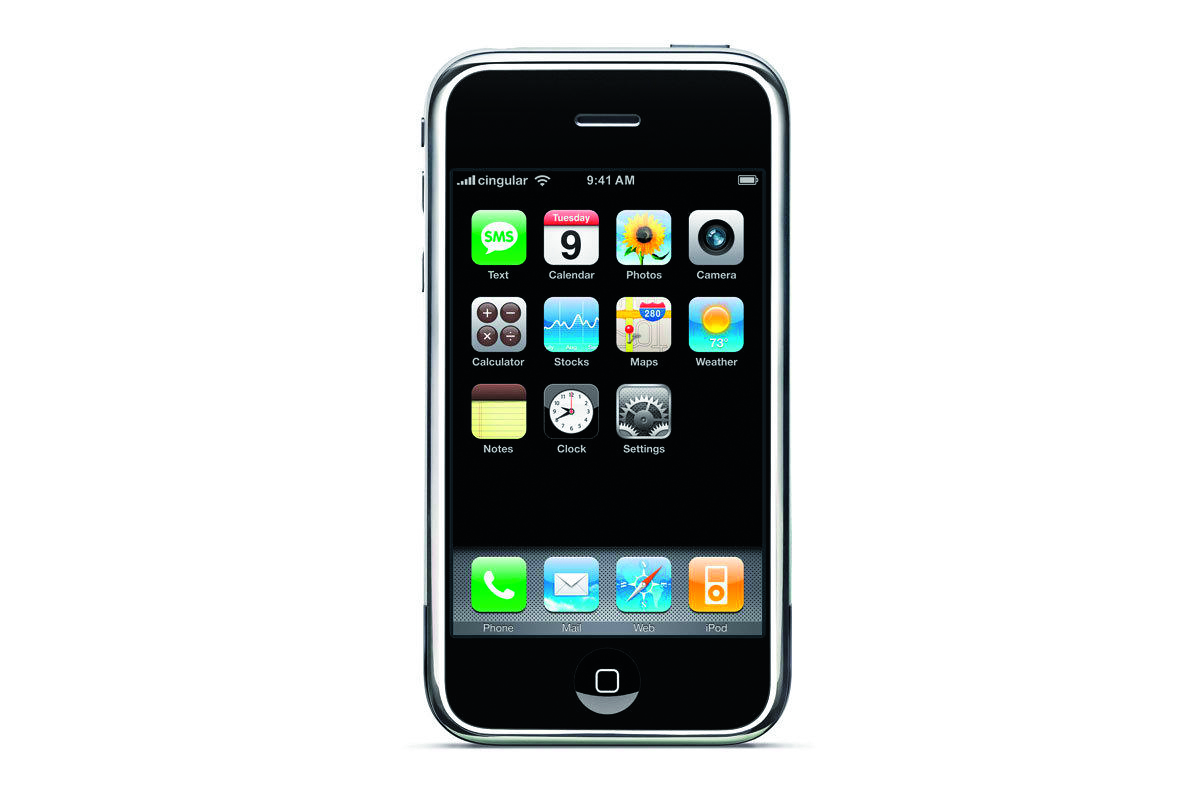
Although there's greater love among designers for the iMac, the iPhone, launched in 2007, has probably changed the industry – along with the world in general – even more.
With his device that 'just works', Steve Jobs launched a revolution that means today more people access the web via phones than desktops, and consequently the design of everything from logos to illustrations needs to work perfectly on small screens.
Of course, the iPhone, much like the Android imitators that have flocked in its wake, isn't just about consumption, but a means of creative production, too.
"I've always wanted to dabble with video, photography, animation and so on, but never really had the headspace to get into the tech to explore those things properly," says Burgerman. "With the advent of smartphones, I suddenly could play with all those things at any time; especially in the lulls during the day, when commuting, idling or just loitering. Making access to those tools so easy, intuitive and casual has really suited me, leading to broaden my practice far beyond just creating 2D images for print."
14. Mad Men
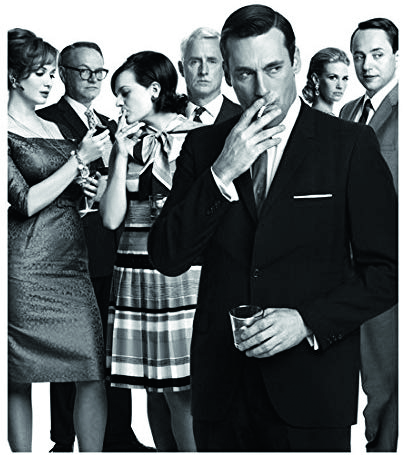
While Milton Glaser may decry the influence on commercial mores on design, for many who were born into it, this now-symbiotic relationship seems natural and normal. So it's not surprising that many creatives loved Mad Men, a blockbuster show celebrating the supposed golden age of advertising in the 1950s and 1960s that premiered in 2007.
Not everyone was a fan, though. Editorial designer George Lois, who's best known for the Esquire covers he crafted between 1962 and 1972, describes the launch of the show as "a key personal moment in my life as an art director and designer"... but not in a good way. "To this day, I resent being called the 'Original Mad Man'," he complains. "The 1960s was a heroic age in the art of communication, but the show was nothing but a soap, where stylish fools humped their appreciative secretaries, sucked up Martinis, and smoked themselves to death as they produced dumb, lifeless advertising.
"The more I think about Mad Men, the more I take the show as a personal insult," he continues. "So, fuck you Mad Men, you phony, 'Gray Flannel Suit,' male-chauvinist, no-talent, WASP, white-shirted, racist, anti- semitic,RepublicanSOBs!"
Next page: Graphic design history landmark events 15-25
Current page: Landmark graphic design events: 01-14
Next Page Landmark graphic design events: 15-25

Tom May is an award-winning journalist and editor specialising in design, photography and technology. He is author of Great TED Talks: Creativity, published by Pavilion Books. He was previously editor of Professional Photography magazine, associate editor at Creative Bloq, and deputy editor at net magazine.
Related articles
Graphic Design History a Critical Guide Summary
Source: https://www.creativebloq.com/features/graphic-design-history
0 Response to "Graphic Design History a Critical Guide Summary"
Post a Comment